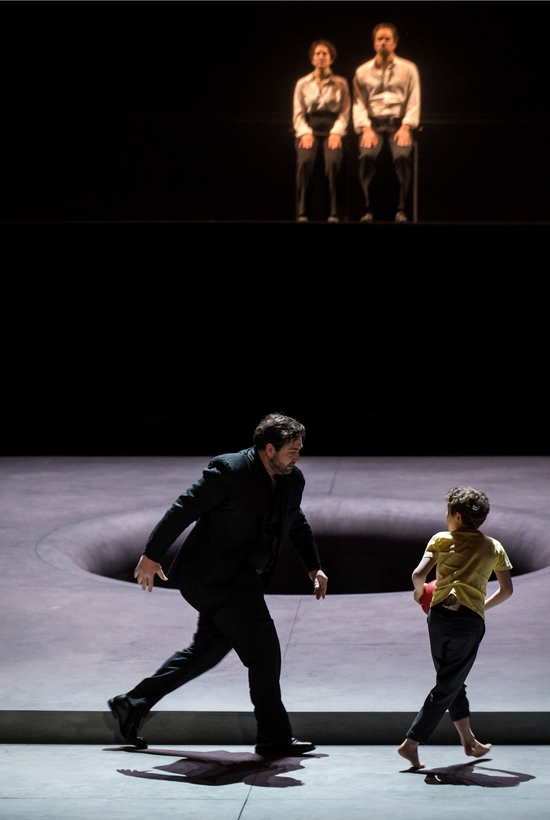Once acquired, a taste for Pelléas et Mélisande easily spirals into addiction. Not even the ever-shifting seascapes of La Mer gave Claude Debussy such scope for atmospherics as the forests and grottos of his only completed opera—and then there’s the enigmatic power of the story. Debussy whittled the libretto down from the play by the Belgian Symbolist (and future Nobel Prize winner) Maurice Maeterlinck, tossing whole scenes while preserving Maeterlinck’s patented incantatory language. At the still center of the poisoned fable hovers the skittish, unfathomable royal waif Mélisande. Married to Prince Golaud of Allemonde, a morose widower who discovers her lost in a forest in the opera’s opening scene, she loses her heart to his younger half-brother Pelléas.
Historical stagings of Pelléas et Mélisande rightly took their cue from medieval romance. At one time, fans in Manhattan could opt for toy-theater realism at the New York City Opera or an evocatively frayed living-tapestry realization at the Met. Now that such literal-mindedness has fallen from grace, two versions filmed in 2021, three months and 500 miles apart, take radically different approaches.

For visual mesmerism, there’s the Grand Théâtre de Genève production, conceived and designed by the performance artist Marina Abramović as an interstellar light show with Constructivist and Art Nouveau inflections. Co-directed and choreographed by Damien Jalet and Sidi Larbi Cherkaoui, the stage pictures pile image upon abstract image, kaleidoscopically, cinematically, incessantly. An all-male dance ensemble of seven reveals lots of skin, grapples frequently, and dons hoods and veils to impersonate bystanders to the action, which, despite all, remains in razor-sharp focus.
The Opéra de Lille offers a radically stripped-down alternative designed and directed by Daniel Jeanneteau. Here the mysteries unfold around a bottomless pit cut into a frame of polished marble. The players, largely indistinguishable from the cast of Men In Black, connect across gulfs of personal space by sheer force of concentration. There’s nary a prop in sight. When Golaud’s little son sings of an immoveable rock that seems rooted in the earth, what he’s sitting next to is Mélisande, on the floor in a heap.

Musically, both performances are of a very high caliber. In Lille, François-Xavier Roth, conducting his period band Les Siècles with a pencil in place of a baton, navigates Debussy’s treacherous waters with masterly assurance. Among his principals, the French soprano Vannina Santoni leads the pack for the guileless, crystalline clarity she brings to Mélisande’s deceptions and evasions. Why she wears a pixie cut rather than Mélisande’s regulation Rapunzel tresses (integral to both the poetry and the stage business) is a question only Jeanneteau can answer.
In Geneva, Jonathan Nott’s sorcery at the podium is more impressive still, touching chords of affinity—all germane—with repertoire from Gounod’s Faust to Wagner’s Parsifal. And in Jacques Imbrailo, a South African baritone prized as Billy Budd and Don Giovanni, Nott has the Pelléas of one’s dreams. In the libretto, it’s said of Pelléas that he has “the sad yet serene look of those who haven’t long to live.” In Imbrailo’s case, the sadness and serenity register likewise in the gentleness of his voice, his spontaneous way with text, and his supple phrasing. To think that going on 30 years ago, rocking a Robespierre-style lace jabot, a 13-year-old Imbrailo hit the Queen of the Night’s incendiary vengeance aria with its eight high F’s right out of the park. Last I looked, the clip had clocked 448,479 views on YouTube, with 4.1K likes and a mere 105 thumbs down. Check it out.
Both performances of Pelléas et Mélisande are available on OperaVision. The Geneva production streams through August 19; the Lille production, through October 9
Matthew Gurewitsch writes about opera and classical music for AIR MAIL. He lives in Hawaii

